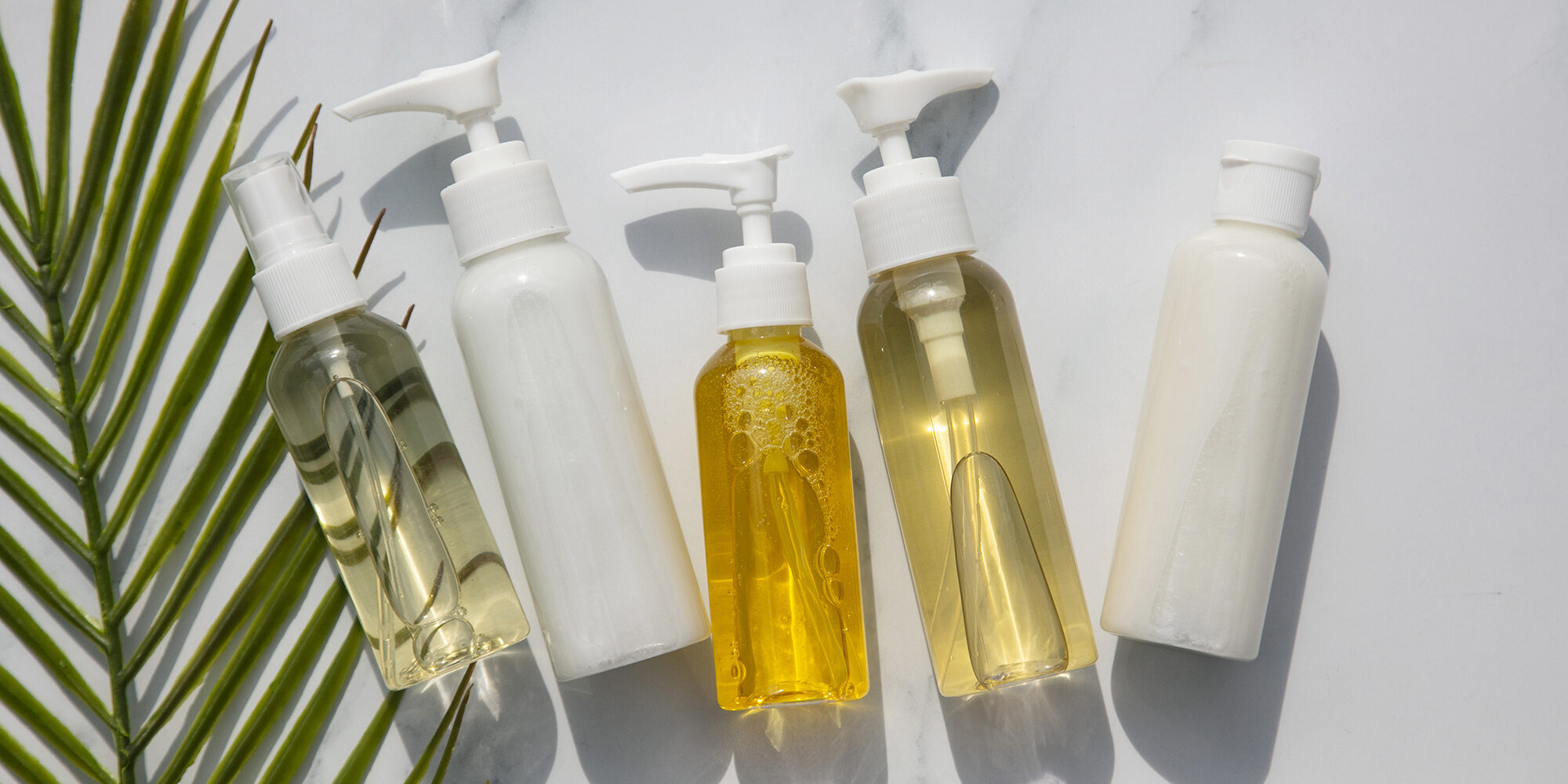
“There Is No Silver Bullet”: What Brands Should Consider As They Step Up Their Sustainability Efforts
According to the United Nations, sustainability is “development that meets the needs of the present without compromising the ability of future generations to meet their own needs.”
Nicole Acevedo, founder and CEO of Elavo Mundi Solutions, Mia Davis, VP of sustainability and impact at Credo Beauty and co-founder of Pact Collective, and Barbara Paldus, founder and CEO of Codex Beauty Labs, co-signed the international organization’s definition last week during Beauty Independent’s In Conversation webinar series on the science of beauty sponsored by Codex. Acevedo says, “It puts the onus on those of us that are here now to do right by those in the future, but without dictating the way forward for them.” With the onus on people and their businesses, Acevedo, Davis and Paldus discussed actionable strategies for beauty brands’ sustainability goals, packaging and shipping methods.
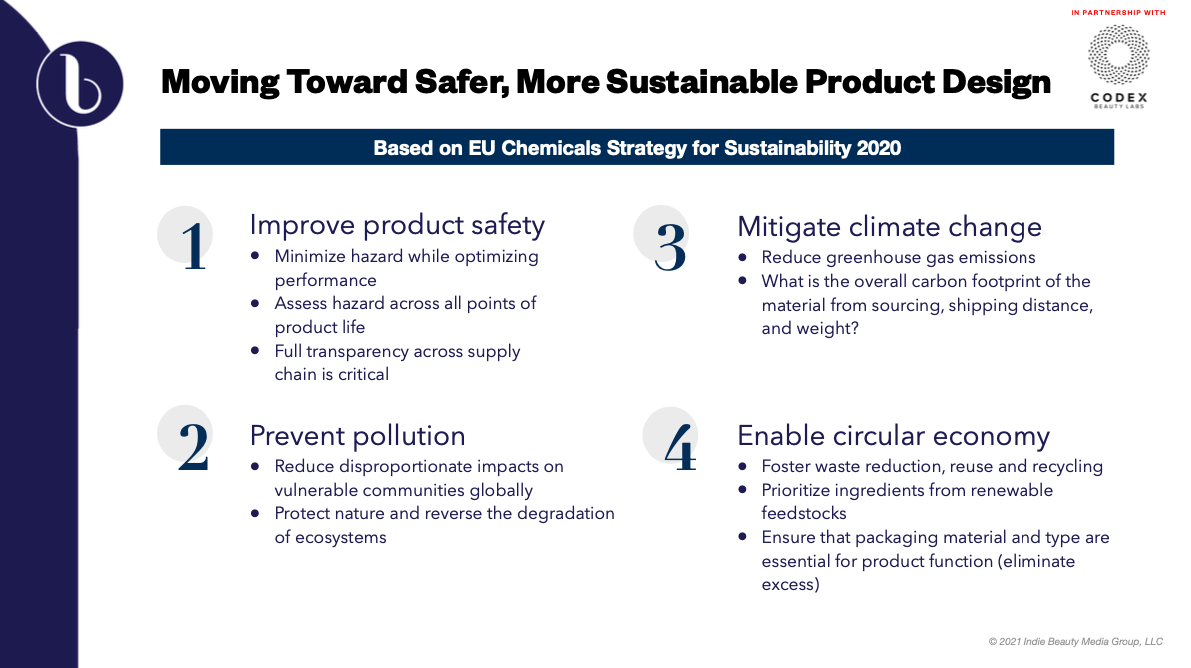
BRANDS Should Integrate Sustainable Practices From The Beginning
Acevedo recommends brands implement sustainable approaches to conducting business from the beginning. She says, “Assess product performance against requirements for safety and sustainability at the design stage of product development rather than after a product has been designed and is on the market.” Based on the European Union’s chemical strategy for sustainability, she goes on to outline four main goals for brands. The first is product safety, which involves assessing and minimizing hazards, and providing transparency across the supply chain.
The second goal is preventing pollution. That prevention applies to reducing waste and the impact on vulnerable global communities. “We have to do business in a way that ensures that we’re not creating even more of a disproportion impact on vulnerable communities,” she says. The third goal deals with mitigating climate change. Brands should address their greenhouse gas emissions and assess their overall carbon footprint. Lastly, they should encourage circular economies. “This is about fostering and prioritizing waste reduction, prioritizing reuse models and responsible recycling, and also prioritizing ingredients from sustainable renewable feedstocks,” says Acevedo, adding, “Something that is renewable doesn’t mean that it is sustainably renewable.”
If brands don’t know where to start, Acevedo says tackling ingredient safety is one of the easiest areas because of the global regulation and awareness around it. “You don’t have to perform a life-cycle analysis on everything, but have a clear understanding of what’s necessary and what’s excess,” she says. “Then, build out and find the resources that help you understand some of the other areas that might seem a little too vague or just unmanageable for a smaller company.”
Pro Tip: Implementing sustainability practices can be challenging, especially given the lack of consistent standards in the industry. That’s why a lot of brands rely on third-party certifiers for guidance. Acevedo lists the third-party certifiers Ecocert for ingredient sourcing, Environmental Working Group (EWG) for ingredient safety, Forest Stewardship Council (FSC) for packaging material, B Corp for corporate accountability, and Cradle to Cradle for the overall product, a certification she describes as “truly the most comprehensive that I’ve seen to date.” Paldus also calls out Cradle to Cradle for being a compelling up-and-coming certification.
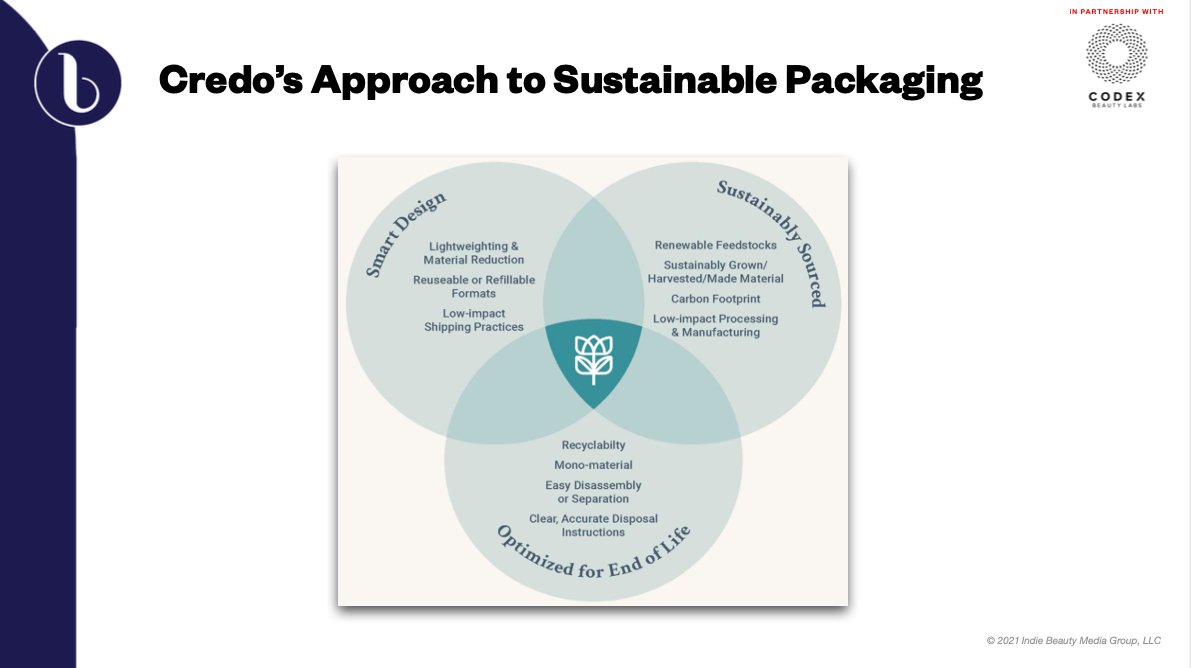
REFILLABLE IS THE FUTURE
When it comes to sustainable packaging, Davis says, “There is no silver bullet or perfect way to do this. It’s about doing less harm and doing better.” Davis points out it’s possible to design a smart product with lightweight materials and less packaging. “The three Rs are reduce, reuse, recycle, and they’re in that order on purpose,” she says. “Reduction is always the best thing. Just don’t make the plastic, just don’t make the greenhouse gases if you can avoid that. That’s always better than offsetting or trying to deal with it later.”
For packaging that is made, Davis argues refillable containers are the future of sustainable beauty. “We need to start shifting the way that we’ve always done things,” she says, spotlighting Credo’s recent elimination of single-use plastic sachets and sheet masks. She highlights a statistic that single-use plastic accounts for 40% of the 17.6 billion pounds of plastic that wind up in the ocean annually. To Davis, refillable beauty packaging can be luxurious and beautiful, and she compares it to the milkman model of refillable glass milk bottles. She says, “It’s kind of like what’s new and innovative is actually old, right?”
Pro Tip: Glass is a popular option for beauty packaging, but Paldus asserts it’s not always the best choice. “Unless you stick to clear glass with no color, that glass does in fact end up in the landfill,” she says. Paldus continues that glass is a costly material to produce, and it can be quite heavy to transport, increasing carbon emissions. “There’s a huge trade-off,” says Paldus. “You may have a product where glass is better, but the only way you’re going to understand this is by doing that full life-cycle analysis of your entire product from cradle to grave.” Alternatively, paper is a leading packaging material and is the most recycled material on the planet.
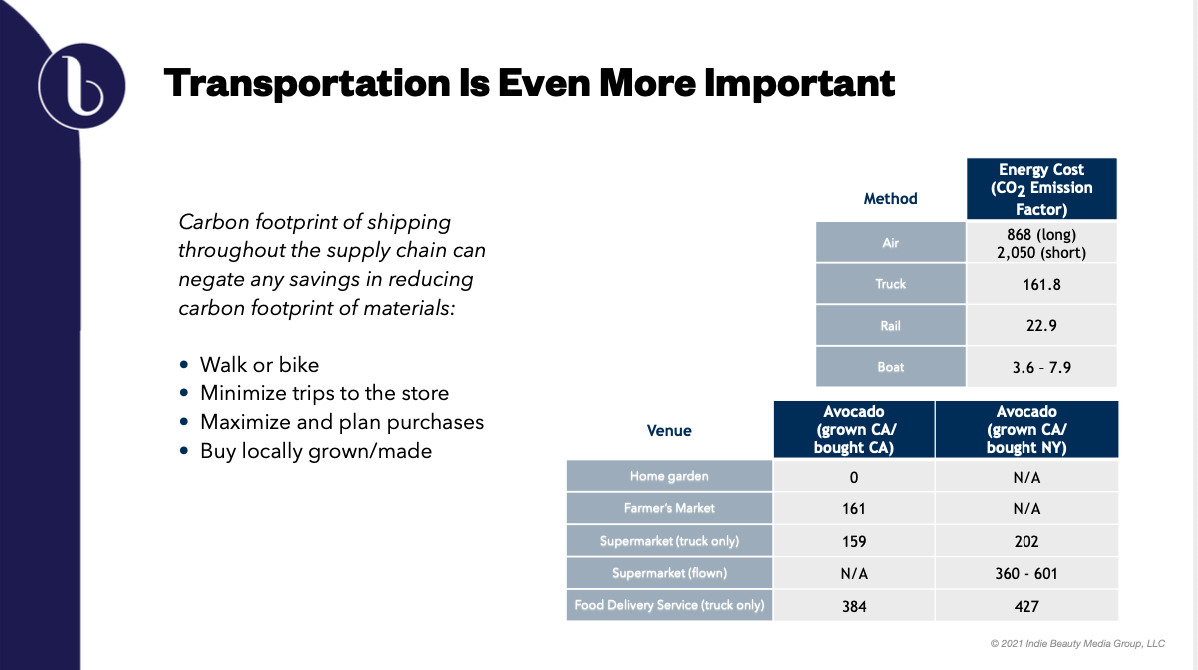
The Importance Of Factoring In Transportation
“Planning your supply chain to minimize your carbon footprint is critical,” stresses Paldus. If brands don’t confront the carbon footprint of the transportation of their goods, Paldus says they “can negate any savings in reducing the carbon footprint of materials.” She shares transporting products via boat or rail is always the better, more efficient option. Paldus advises, “Avoid air transport as much as possible, it’s just very, very expensive from a carbon footprint standpoint.”
Pro Tip: “Consumer behavior has a far bigger effect than product marketing,” says Paldus. Education is essential, whether it pertains to encouraging shorter showers, explaining what the different recycling symbols mean or prodding customers to walk or bike to pick up products. Paldus says, “While as suppliers and companies that buy packaging we can do absolutely everything we can, if there is no education and improvement in consumer behavior, we won’t achieve the kind of carbon footprint improvements or goals we have as a society.”
In order to inform consumers, Paldus maintains brands must first be informed themselves and make the effort to understand data across different sectors. “It’s not just carbon emissions, it’s not just about the garbage generation and recycling, it’s not actually about just the consumer use,” she says. “It’s about all of the above and understanding the interplays and understanding what that total consumption is and, then, educating consumers to be a part of that journey.”

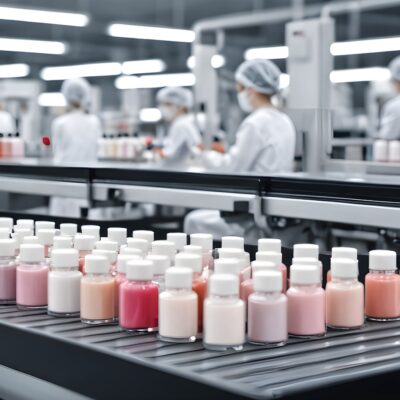
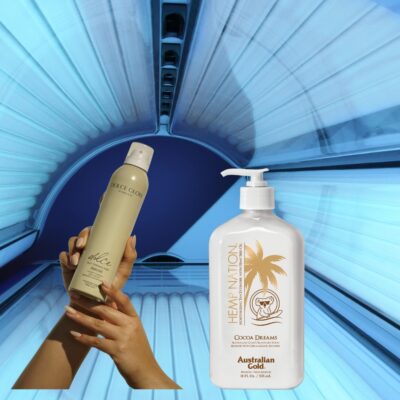


Leave a Reply
You must be logged in to post a comment.